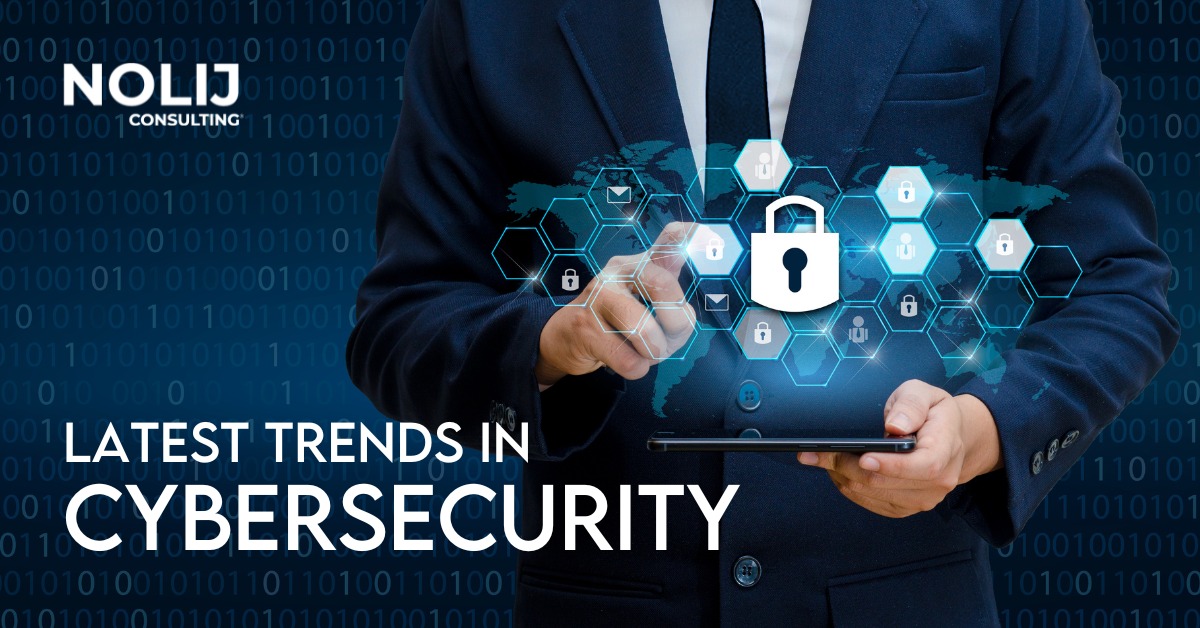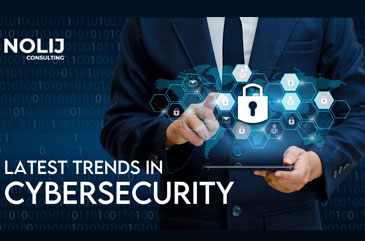
Latest Trends in Cybersecurity
Companies are investing in new technology every day to enhance customer experience, support remote working, and create more value. During the pandemic we also saw online activity and digital environments grow exponentially. But as the world becomes more interconnected through technology, potential new vulnerabilities in cybersecurity also rise.
Interconnectedness and increased use of digital services has led to burgeoning cyberattacks to business enterprises, state and federal governments, municipalities, and other vital organizations. Daily news of hacking, data breaches, and ransomware has become the norm. A November 2021 PwC study states that 66% of UK business leaders expect cybersecurity threats to increase over the next 12 months.1
Fortunately, there have been several developments in cybersecurity that will help organizations to better protect themselves and their customers.
Growing Threat of Ransomware
Ransomware is a rapidly growing threat that gives hackers an easy way to gain financially. There are currently more than 120 ransomware techniques and hackers are becoming more and more proficient at hiding malicious code.
The rapid digitization of businesses during the pandemic, along with remote working, added to an increase in ransomware attacks. The cyberattacks not only cause financial damage, but also damages a company’s reputation because of breach of sensitive data such as customers’ social security numbers and credit card information.
Recently, there has been a rise in ransomware attacks targeting critical infrastructure such as hospitals and gas pipelines. In February 2021, a hacker briefly managed to alter the chemical operations of a water treatment facility in Florida in a way that could endanger lives. 2
Companies need to be more proactive about implementing stronger cybersecurity controls and opting for the right tools. Education is also a vital way of tackling this threat, with research stating that employees who are aware of the dangers of this type of attack are significantly less likely to fall victim. 3
Evolution of the Internet Of Things (IOT)
The IOT has exploded in recent times. By 2027, Business Insider predicts that more than 41 billion Internet of Things (IoT) devices will be online and connected. 4
These physical devices that connect to the internet, such as smart home appliances, wearable fitness devices, voice assistants, and smartwatches create innumerable points of entry for cyber criminals.
IoT devices send and receive data over the internet. They also have fewer processing and storage capabilities, making it more difficult to use security applications like antivirus or firewalls to protect them. This has resulted in IoT attacks being among the top cybersecurity trends today. A Symantec report says that infected routers accounted for 75% of all IoT attacks that occurred in 2018, whereas connected cameras accounted for 15% of them. 5
Cloud Security
More and more organizations are migrating to the cloud due to the convenience and range of cloud management software solutions. However, if these are not configured or maintained correctly, they are vulnerable to attack as cybercriminals can bypass internal policies and hijack accounts or access sensitive data in the cloud. The average cost of a data breach can be up to $3.86 million, so it is critical for IT security professionals to take steps to minimize cloud threats.
Predictive security is proving effective in identifying threats to the cloud before cyberattacks take place. Consequently, businesses have been implementing predictive security cloud, with the market gaining a 261% ROI over the last three years. Some sectors are also opting for leveraging multi-factor authentication to enhance security. 6
Growth Of Artificial Intelligence (AI)
AI and Machine Learning (ML) has been instrumental in bringing about radical changes in cybersecurity. AI is able to identify anomalous behavior patterns which may be caused by a cybersecurity threat, such as financial fraud. AI is increasingly being used to build systems for automated security, face detection, natural language processing, and automated threat detection. These systems can successfully predict cyberattacks and notify admins about any data breaches instantaneously.
Using AI, it is also possible to analyze huge amounts of risk data much faster, making it advantageous for larger organizations dealing with massive quantities of data, or smaller businesses who are under-resourced.
A recent Capgemini study revealed that at present, two-thirds of businesses believe AI is necessary to identify and counter critical cybersecurity threats, and nearly three-quarters of businesses are using or testing AI for this purpose. 7
Nolij Cybersecurity Services
At Cyber Nolij, we ensure an in-depth understanding of our client’s security posture and focus on cybersecurity at every level of implementation. Our platforms allow clients to control their security risks and identify and respond to threats quickly.
Our cybersecurity Raptor framework includes:
- Advisory – helping leaders understand the IT ecosystem and the cyber threats around them
- Vulnerability Management – identify, report, and mitigate findings
- Infrastructure Management – defend beyond the data center
- Device Management – enable IT to not only secure but respond rapidly to threats
- Policy Management –ensure compliance of the policies
- Physical Management – perimeter security strategy and implementation
Given the rapid advancements in technology-driven change, digital disruption is inevitable. Even as businesses invest heavily in new technology, they need to keep in mind the related cyber risks. It is important for organizations to adopt a proactive approach and equip themselves with the latest and best defensive cybersecurity services in order to thrive in an increasingly digital world.
[2] https://www.industrialdefender.com/florida-water-treatment-plant-cyber-attack/
[3] https://www.kaspersky.com/blog/the-human-factor-in-it-security/
[4] https://www.businessinsider.com/internet-of-things-report?IR=T
[7] https://www.capgemini.com/gb-en/research/reinventing-cybersecurity-with-artificial-intelligence/
